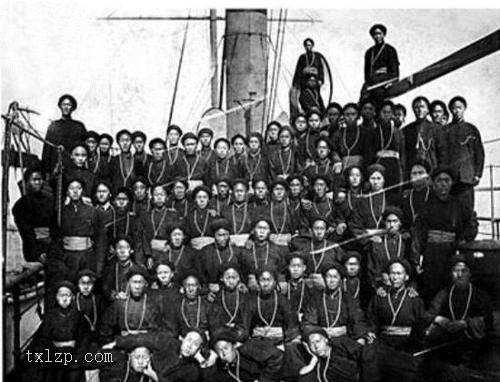Period:Warring States period Production date:5thC BC – 2ndC BC
Materials:jade
Technique:cut, incised,
Subjects:dragon
Dimensions:Height: 7.678 centimetres Length: 12.4118 centimetres
Description:
One pair of jade `S’ dragons with raised scroll pattern.
IMG
![图片[1]-figure BM-2022-3034.143-China Archive](https://chinaarchive.net/Warring States period/Jades/mid_PS277652.jpg)
![图片[2]-figure BM-2022-3034.143-China Archive](https://chinaarchive.net/Warring States period/Jades/592_.jpg)
Comments:4thC BC. Apart from variation in the alteration of the stones, these two pendants are almost identical. What is more their deeply curved bodies and small projecting fins are so similar that they seem to have been cut with the same template; alternatively, one was made as an exact replica of the other to create an almost perfect pair. The creatures are more or less completely abstract, each composed of a powerfully arched body, scrolling fins and an upper fin marked wit incised lines; only their heads and single lower claws display distinctly animal features. The pendants are outlined by small ridges around the outside, which bound areas of relief curls embellished by small incised lines. The uneven surface of the background reflects the light with the rippled effects noted in connection with nos.58 and 207 [2014,AsiaLoan,1.175]. The dragons were suspended from holes at the centre of their backs. The present pendants are similar to fourth-century BC examples from the tombs of the kings of Zhongshan at Pingshan xian in Hebei, and from Henan Gushi. Matched dragon pendants of this quality are rare, having been used only in tombs of the highest rank. There are only a few examples in collections outside China. Dragons bearing a very close resemblance to these jade examples occur with bi discs in Qin and Han dynasty tomb paintings and stone reliefs. Bob Ellsworth notes that there is a similar example in Cultural Relics Master Pieces unearthed in Anhui, China in Recent Years by Li Jiu Fang, Wen Wu Press, Beijing, 1987. See Rawson 1995, pp.269-270, cat.no.17.9.
Materials:jade
Technique:cut, incised,
Subjects:dragon
Dimensions:Height: 7.678 centimetres Length: 12.4118 centimetres
Description:
One pair of jade `S’ dragons with raised scroll pattern.
IMG
![图片[1]-figure BM-2022-3034.143-China Archive](https://chinaarchive.net/Warring States period/Jades/mid_PS277652.jpg)
![图片[2]-figure BM-2022-3034.143-China Archive](https://chinaarchive.net/Warring States period/Jades/592_.jpg)
Comments:4thC BC. Apart from variation in the alteration of the stones, these two pendants are almost identical. What is more their deeply curved bodies and small projecting fins are so similar that they seem to have been cut with the same template; alternatively, one was made as an exact replica of the other to create an almost perfect pair. The creatures are more or less completely abstract, each composed of a powerfully arched body, scrolling fins and an upper fin marked wit incised lines; only their heads and single lower claws display distinctly animal features. The pendants are outlined by small ridges around the outside, which bound areas of relief curls embellished by small incised lines. The uneven surface of the background reflects the light with the rippled effects noted in connection with nos.58 and 207 [2014,AsiaLoan,1.175]. The dragons were suspended from holes at the centre of their backs. The present pendants are similar to fourth-century BC examples from the tombs of the kings of Zhongshan at Pingshan xian in Hebei, and from Henan Gushi. Matched dragon pendants of this quality are rare, having been used only in tombs of the highest rank. There are only a few examples in collections outside China. Dragons bearing a very close resemblance to these jade examples occur with bi discs in Qin and Han dynasty tomb paintings and stone reliefs. Bob Ellsworth notes that there is a similar example in Cultural Relics Master Pieces unearthed in Anhui, China in Recent Years by Li Jiu Fang, Wen Wu Press, Beijing, 1987. See Rawson 1995, pp.269-270, cat.no.17.9.
© Copyright
The copyright of the article belongs to the author, please keep the original link for reprinting.
THE END



![[Qing Dynasty] British female painter—Elizabeth Keith, using woodblock prints to record China from the late Qing Dynasty to the early Republic of China—1915-China Archive](https://chinaarchive.net/wp-content/uploads/2022/11/image-191x300.png)

